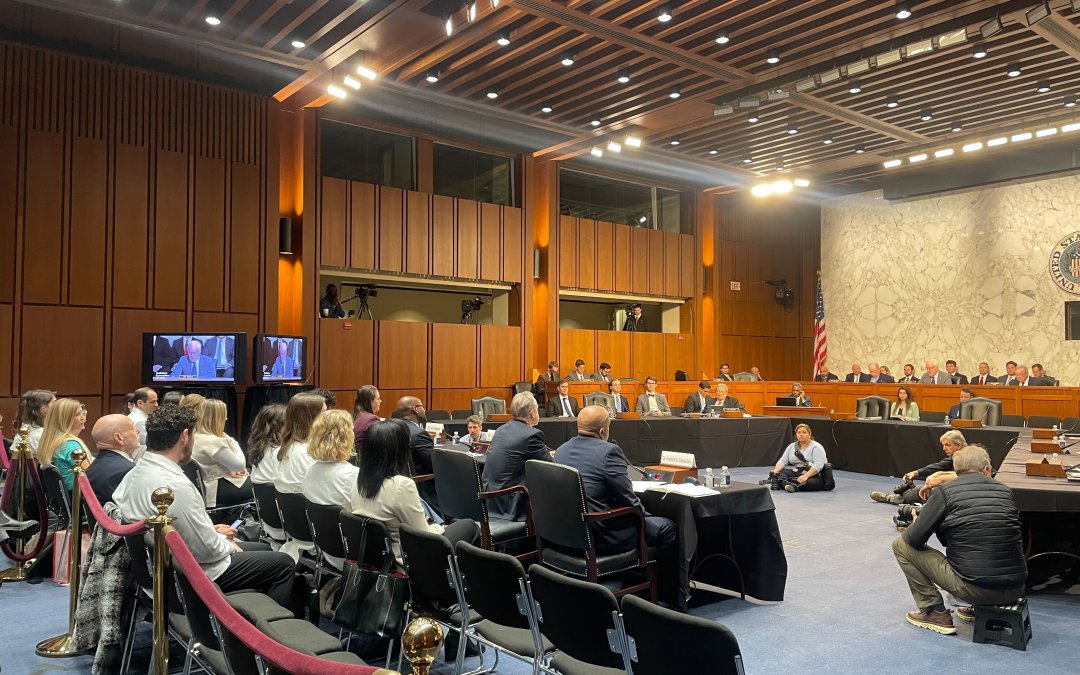WASHINGTON – Doctors and medical experts on Tuesday called on lawmakers to take a public health approach to the gun violence epidemic they say is plaguing the United States.
Since 2020, guns have become the number one cause of death for children and teenagers, according to a study released earlier this year. In 2022, about 132 people died from a firearm-related injury each day. That’s more than the deaths for children caused by cancer or vehicle accidents.
A public health approach to the crisis would create multiple solutions to simultaneously attack the problem, said Dr. Megan L. Ranney, who is a practicing emergency physician and dean for the Yale School of Public Health. The approach involves gathering data on the problem to see who is most affected; defining risk and protective factors; and creating programs that would change existing patterns to avert injury, hospitalization or death.
“I have had a front row seat to our nation’s growing firearm injury epidemic, [and] I have worked to define and implement the public health approach to this crisis,” Ranney said at a Senate Judiciary Committee hearing. “We have example after example of how this four-step approach, when applied systematically, can improve human health without abrogating rights.”
Ranney said that community violence intervention (CVI) programs should be considered an important part of the solution. CVI programs use approaches like putting in place “violence interrupters” and case managers to prevent gun violence.
Vaughn Bryant, executive director of the Metropolitan Peace Initiatives, a CVI program based in Chicago, said his program has produced real results. Metropolitan Peace Initiatives coordinates a cross-agency effort among community outreach and engagement organizations with the goal of reducing gun violence in the city’s highest-risk neighborhoods.
Bryant called on Congress to provide federal support and funding to CVI programs like his own.
“It has a national impact,” Bryant said. “Giving a resource allocation can create standards of practice across the country that are important for this work.”
Other organizations working to prevent gun violence agreed.
“Community violence intervention programs in general are a great proactive approach, in a lot of places across the country and in a lot of different communities, to address the crisis,” Zeenat Yahya, policy director at March for Our Lives said in an interview with the Medill News Service.
Both sides of the aisle were divided on whether or not gun violence should be considered a public health crisis.
Sen. Dick Durbin (D-Ill.) said CVI programs are important in interrupting acts of violence before they happen. He said creating more of these programs could help build on the Bipartisan Safer Communities Act, an initiative passed last year that invests in mental health funding and violence prevention initiatives.
“Surely we can find some common ground between parties to create real change for the American people when it comes to this public health crisis of gun violence,” the chairman said.
But Amy Swearer, senior legal fellow at the conservative Heritage Foundation, was critical of the framing of the gun violence crisis as an epidemic. She argued that “using the public health lens hasn’t changed the discussion.”
Swearer, along with Republican lawmakers, continued to emphasize the constitutional right to bear arms.
“The Second Amendment in the Bill of Rights is not a public health crisis,” Sen. Ted Cruz (R-Texas) said.
The sharply divided Congress is unlikely to take up new legislation, especially in an election year, but both parties agreed that mental health initiatives and reducing homicides should be priorities.
“I hope we look at the entire picture of gun violence, which includes focusing on repetitive acts of violence by a small percentage of our communities, focusing on mental health diagnosis and treatment, and finding ways that we can address gun violence like we did in the Bipartisan Safer Communities Act,” said Sen. John Cornyn (R-Texas).
Medical experts emphasized that bipartisan efforts are crucial to effectively combating the gun violence crisis.
“Help our country have hope by demonstrating collaborative action as we have done before,” Ranney said. “We have shown we can reduce the risk of a shooting long before semantics of the gun with intent to harm. Through your bipartisan commitment to this public health approach. Our country can reduce firearm injury and death.”


